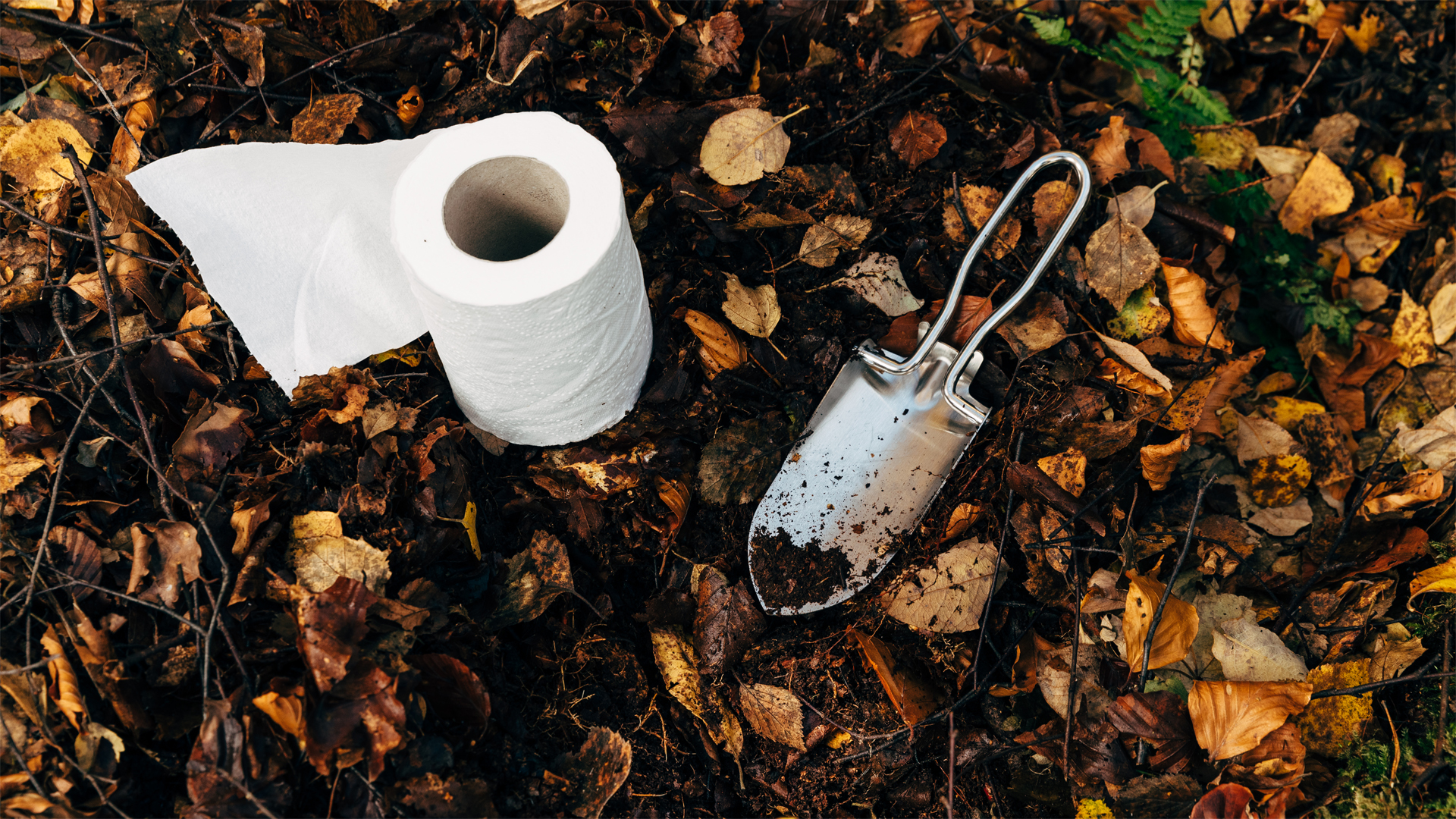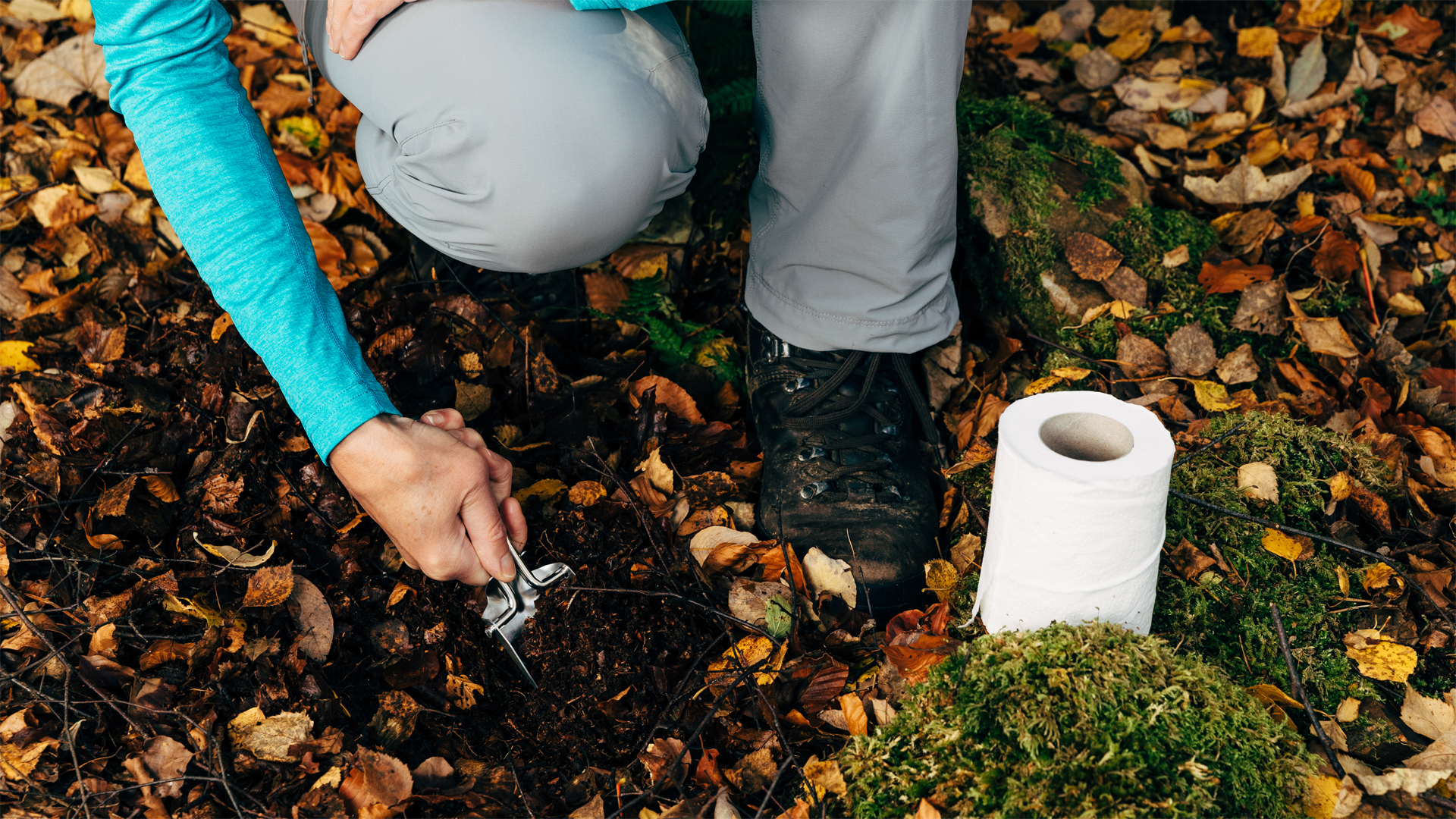How to poop and pee on the trail: your guide to going when you need to go
Everything you need to know about number ones and number twos in the outdoors

Are you up to date with the latest best practice on pooping and peeing while out on the trail? It’s changed significantly in the last few years due to some decidedly disgusting goings on, so make sure you’re peeing and pooping right with our quick guide.
Peeing
We’ll handle this one first as it’s the easier of the two and the one you’re probably most familiar with already in the great outdoors. Here, men have it decidedly easier with their handy in-built spout system, so all that’s required is the basic modesty of turning around or popping behind a tree or bush.
Women need to bare all and squat down and while there are a few ladies brave enough to just do this on the start line or a trail race (though we have seen it!) most will feel way more comfortable out of sight behind a dense bush or large tree, with a friend on guard if possible.
You can buy a SheWee, a sort of plastic, surrogate-penis-tube to pee into (it’s not penis-shaped but that would be amusing!) so that can be handy at races (and festivals) if there are plenty of urinals and a big queue for the loos, but this also means you have to find somewhere to carry it, clean it and not lose it, which can be more faff.
Regardless of what kind of bits you have down there, avoid peeing near water sources so as not to contaminate them, and buildings or shelters so as not to make everything smell like a urinal. In the UK the advice is to go 30 meters (98 feet) away, with 60 meters (197 feet) the recommendation in the USA.
Pooping

Pooping is more of a problem, and here’s where the guidance has massively changed from burying to carrying it out. Why? Human faeces contains a frightening variety of bacteria, protozoa and viruses that can make us very ill, along with chemicals, hormones (from birth control pills) and antibiotic-resistant bacteria. When poopy pathogens leach into the soil they spread into waterways and carry on multiplying in whatever eco-system they find themselves in, often to the detriment of nature and ourselves.
The advice for dealing with number twos out on the trail used to be to dig a small pit (called a cat hole in the USA) 60m (197 feet) away from water, paths, buildings and any kind of shelter. Make it at least 15-20 cm (6-8 inches) deep and wider at the top, crouch over it, do your poop, wipe and drop in the toilet paper, then cover it back over, often with a rock or two to stop animals digging it up.
All the latest inspiration, tips and guides to help you plan your next Advnture!
Despite the now more wildly known fact that the poop stays... er… poopy in this situation, leaching the evils mentioned above into the surrounding soil and water (especially high in the mountains where the process of degradation is much slower for everything), this was considered okay when there were much fewer people out enjoying the wilderness. However in more recent years numbers have increased rapidly, overloading highly used areas with disgusting human excrement.
And in the wake of Covid-19, there have been more and more inexperienced people heading off into the countryside or backcountry that don’t even know about burying waste, let alone the latest in pooping etiquette. There has been a marked increase in revolting sights like trails lined with human waste, honey pot sites smelling like sewers and used loo paper dotting the mountainside like soggy, poop-stained flowers. Do you fancy scraping a human turd off your shoe? Or unknowingly ingesting it via a stream? It doesn’t bear thinking about.

So the message now is to clean up after yourself just as you would after your dog. But don’t worry, if you’re not a dog owner and dry-heave at the thought of bending down over your own poop to coax its warm, squishy brownness into a bag. There are double-layered human poo-bags that you can squat over. These are often called WAG (Waste Alleviation and Gelling) bags and inside are chemical crystals or a powder that kills off the tiny poop monsters. They’re often sold as full kits with toilet paper and an antibacterial wet wipe for your hands inside so you have everything you need to use that ‘loo with a view’.
Simply seal up the bag once you’ve done your business, pop it into a dry bag (designate an old one as your toilet dry bag) or a poo tube (a more robust, wide-necked bottle), and dispose of this unsavoury cargo as you would a bag of dog poop or a dirty nappy when you get back to civilisation. Then disinfect the container, so hand wash the dry bag or clean the poo tube as you would your toilet.
It’s the same for period waste like tampons and sanitary towels – these have to be carried out rather than buried because they contain either non-biodegradable or very slow to biodegrade waste. Even if you’re using a menstrual cup, tip the blood into a nappy bag or poo bag to leave no trace. Use a bottle of water and an alcohol wipe to clean the cup – this is fine as a one-off even though some of the menstrual cup sites will advise against using alcohol for cleaning them. Our guide to camping on your period explains more.
The co-founder and former editor of Trail Running magazine, Claire now runs the YouTube channel Wild Ginger Running, creating films about trail- and ultra-running advice, inspiration, races and gear reviews. An award-winning journalist, writing for outdoor and adventure sports magazines and websites, Claire's first book, The Ultimate Trail Running Handbook (5k to 50k), is out now. Her second, The Ultimate Ultra Running Handbook (50k to 100 miles), is out Autumn 2024. Claire also speaks and presents at events and races.

